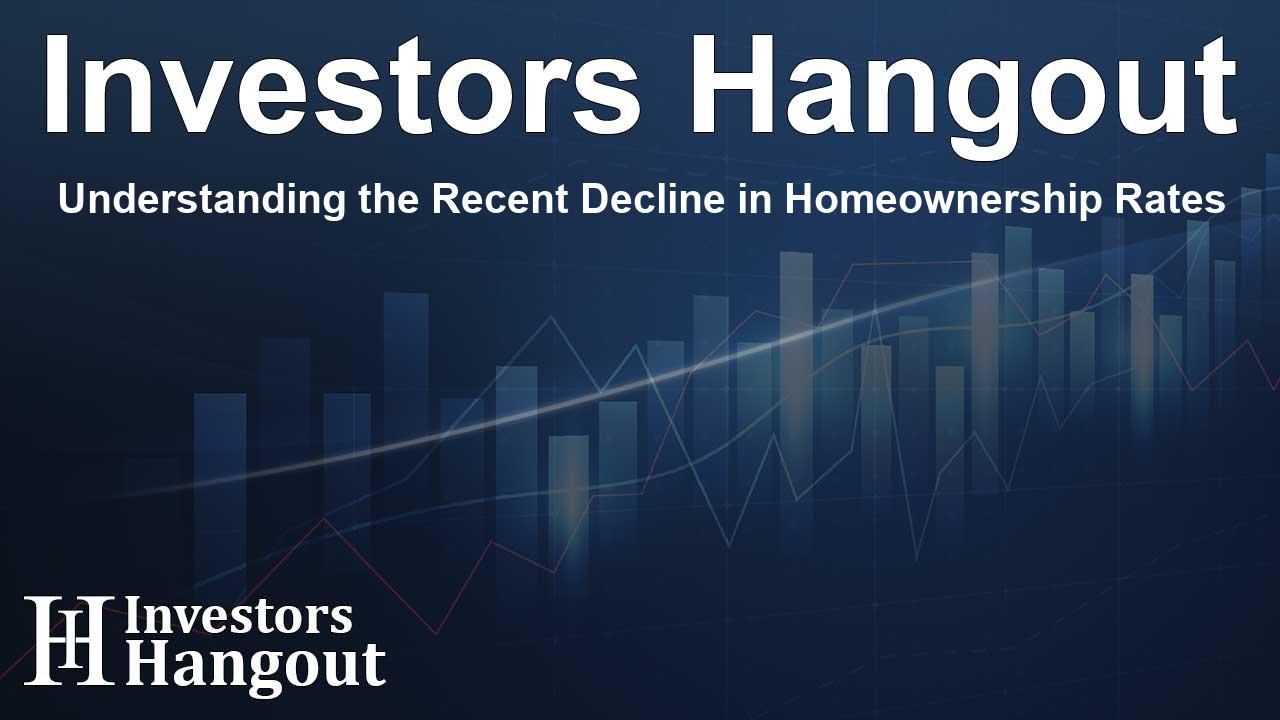Understanding the Recent Decline in Homeownership Rates

The Decline in Homeownership Rates Amidst a Housing Boom
The recent trends in homeownership rates have sparked considerable debate, especially in light of the ongoing building boom. While new homes are being constructed in large numbers, the reality is that the proportion of people owning their homes is continuing to fall.
Understanding Housing Trends
If we take a closer look at how the housing market has evolved over decades, we notice that during the last half of the 20th century, trends in rented, owned, and vacant homes appeared quite linear. However, this linear progression has exhibited notable breakdowns in recent years. A rough estimation suggests that the demand for new homes could be in the range of 15 million to 20 million units, given the current circumstances.
The Impact of Vacancies on Housing Supply
To keep up with the historical trendlines, we need to find a balance: approximately 300,000 vacancies, 550,000 rental units, and about 950,000 owned homes need to be produced annually. Altogether, this amounts to around 1.8 million new homes every year. Despite this, recent figures suggest that we have only reached about 1.7 million constructions in 2024, indicating a troubling trend for future homeownership rates.
The Housing Demand Dilemma
Interestingly, many estimates of housing shortages rely heavily on vacancy rates, a notion that seems odd. It is as if the fundamental understanding of housing demand hinges solely on the numbers, ignoring the nuances of consumption. This simplistic view led us to the pre-2008 bubble mindset, where economists predicted outcomes without delving into how various factors affect the overall market.
The Lessons from Past Economic Choices
Reflecting on the past, economists like Ed Leamer warned that determining low interest rates could inflate home construction timelines incorrectly. These predictions indicated that housing markets could collapse as demand faltered. This fear of a tightrope-like balance in housing demand has continuously led to oversimplified solutions by policymakers.
The Current Housing Landscape
The relationship between housing construction and vacancies has become increasingly complicated. Historically, higher vacancy rates seemed to correlate with periods of recession rather than being driven by booming construction activity. The reality is, the cycle of vacancies did not align with increasing home construction, but rather, homes left vacant from economic downturns created these issues.
As a result, today’s housing market finds itself stabilizing around specific benchmarks. New single-family homes are predicted to be capped at about 1 million units annually due to restricted mortgage access. This slow growth only further complicates the existing dynamics where renters are a significant portion of the housing market.
The Evolving Rental Market Trends
With the rapid development of build-to-rent properties, a new narrative in housing consumption has emerged. This involves creating more rental units to meet current demands. Consequently, as rental housing increases—a marked rise of over 100,000 new rental units annually—the overall homeownership rate has seen a decline, falling from a recent peak of 66.1% to 65.1% in less than a year.
Looking Towards the Future
As we project future trends, it seems likely that homeownership rates will keep dropping, potentially because of growing private equity interests in the rental market. These developments, alongside new housing markets focusing on rentals, could shift the narrative, placing additional blame on these entities for the decline in ownership we observe.
While these trends might provide a short-term solution for some, policymakers and stakeholders must tread carefully. The narrative presented in the media often overlooks the complex dynamics at play, simplistically attributing the fall in ownership rates to external factors, rather than addressing the broader systemic issues involved in housing access and affordability.
Frequently Asked Questions
What factors are contributing to the decline in homeownership rates?
The decline in homeownership rates is primarily driven by restrictive mortgage access, combined with a significant rise in rental housing options as construction shifts toward more rental units.
How does the current building boom impact housing availability?
Although there is a boom in new construction, it mainly focuses on rental units. This trend fails to keep pace with the needs for owned homes, leading to rising vacancies and declining ownership rates.
Why are vacancy rates significant in understanding housing demand?
Vacancy rates serve as indicators of housing supply sustainability. A rise in vacancies often reflects stagnation in the housing market rather than genuine oversupply through new constructions.
What might the future of the housing market look like?
Future housing markets could see increased numbers of rentals over owned homes, an issue exacerbated by limited mortgage access and rising costs of housing development.
How should policymakers respond to the changing housing landscape?
Policymakers need to consider a balanced approach that addresses both rental affordability and supports homeownership opportunities rather than restricting rental development.
About The Author
Contact Kelly Martin privately here. Or send an email with ATTN: Kelly Martin as the subject to contact@investorshangout.com.
About Investors Hangout
Investors Hangout is a leading online stock forum for financial discussion and learning, offering a wide range of free tools and resources. It draws in traders of all levels, who exchange market knowledge, investigate trading tactics, and keep an eye on industry developments in real time. Featuring financial articles, stock message boards, quotes, charts, company profiles, and live news updates. Through cooperative learning and a wealth of informational resources, it helps users from novices creating their first portfolios to experts honing their techniques. Join Investors Hangout today: https://investorshangout.com/
The content of this article is based on factual, publicly available information and does not represent legal, financial, or investment advice. Investors Hangout does not offer financial advice, and the author is not a licensed financial advisor. Consult a qualified advisor before making any financial or investment decisions based on this article. This article should not be considered advice to purchase, sell, or hold any securities or other investments. If any of the material provided here is inaccurate, please contact us for corrections.
